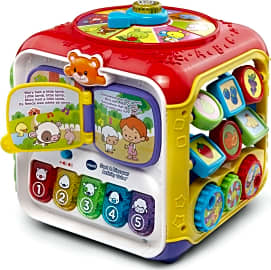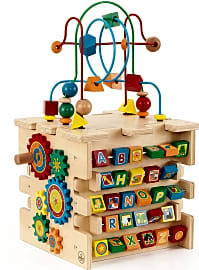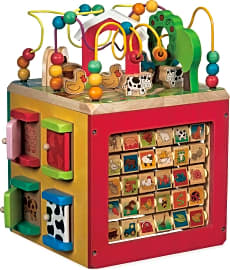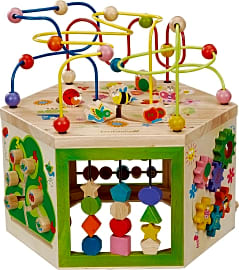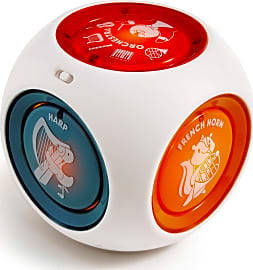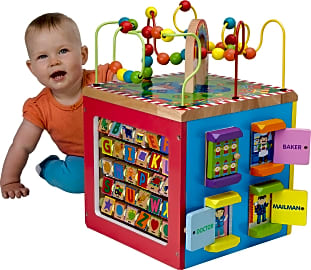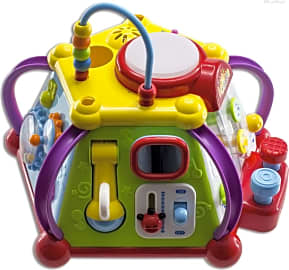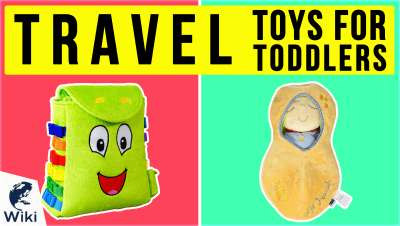The 10 Best Activity Cubes

This wiki has been updated 38 times since it was first published in July of 2015. Don't tell your little ones, but they're not just having fun when they play with these colorful activity cubes. Their numerous features are designed to not only entertain, but also to help with the development of crucial visual and motor skills, and to promote thinking, problem solving, reading, and shape recognition capabilities, too. We've included models for both babies and toddlers. When users buy our independently chosen editorial recommendations, we may earn commissions to help fund the Wiki.
Editor's Notes
January 13, 2020:
During this update, we decided to eliminate a few of our previously recommend models for a variety of reasons. In the case of the Alex Jr. Woodland Wonders, we didn't feel that its more than $100 price tag was justified when there are many more affordable options that offer similar features, such as the EverEarth Garden, which is also six sided and packed with tons of engaging activities. We also removed the Fisher-Price Incrediblock, which has an overall lackluster build quality and runs through batteries quickly.
An interesting new addition taking the place of one of the removed models is the Munchkin Mozart Magic. Rather than the standard bead mazes and turning gears, it is a music-focused option that teaches children how to combine sounds to the make their own tunes and melodies. It can also play eight Mozart compositions, so you'll be exposing your child to classical music at a young age, something many experts recommend. Another cube that allows children to make their own melodies is the VTech Sort and Discover, which features five, light-up piano keys, in addition to a plethora of other activities.
We also added the Infantino Big Top Discovery Development Toy, which is soft plush intended for babies as young as three or four months old. It has activities on all six sides, including a removable tethered ball and a mirror. Plus, its small, easily packable size makes it an ideal travel toy for road and airplane trips.
The Hape Country Critters retained a high ranking on our list due to the company's reputation for making safe, high-quality toys that last a long time, as did the Kidcraft Deluxe KKR63298.
The Importance Of Play For The Young Mind And Body
So facilitating play is of critical importance for the thoughtful, engaged parent, care provider, and/or educational facility.
Playtime is anything but child's play; in fact, it is through play that a youngster learns almost everything about their world, from the basics of shape and color, to complex concepts like counting and grouping, to the nuances of sharing and cooperation. And then of course there's the fact that playing is simply fun; play is a way for children to enjoy themselves, to feel secure and loved, and to burn off excess energy in a safe and productive environment.
So facilitating play is of critical importance for the thoughtful, engaged parent, care provider, and/or educational facility.
Researchers of childhood development have divided play into four concrete stages of play. They are defined as:
Solitary Play - During this stage, children tend to engage with objects, adults, animals, and everything else on their own terms, usually disinterested by the intentions others may have for a given toy, instrument, book, and so forth. Solitary play usually lasts until around two years of age.
Parallel Play - This stage involves playing alongside other children, potentially even engaging in the same activity as a peer, but it seldom involves truly cooperative play, such as sharing a game or completing a joint art project. Parallel play is common to age three and sometimes beyond.
Associative Play - Often referred to as "mirroring," this stage of play will see children engaging in the same activity, though not necessarily doing so in cooperation. A child may be inspired by what he or she sees a peer doing and feel compelled to then complete the same action themselves. This play is common among three and four years old.
Cooperative Play - As the name suggests, this type of play signifies a child finally fully engaging with others, sharing activities and understanding the give-and-take nature of cooperation. It is a critical skill that the youngster will refine for the rest of their lives, and which will commence in the fourth or fifth year of life.
One of the best ways to facilitate appropriate, productive play for single children and for groups of kids alike is with a high quality activity cube, which will provide myriad opportunities for exploration and enjoyment in one handy unit.
What To Look For In An Activity Cube
You should choose an activity cube that is both at and slightly above your child's developmental stage; for example, if your child has learned basic counting and number correspondence skills, consider an activity cube that has numbers starting in the range your child already understands but counting up higher than their current ability. If your child can recognize a few letters and seems interested in learning even more about language, opt for an activity cube that has the entire alphabet and perhaps even some simple words on display.
For very young children, the best activities are tactile; a child can enjoy an activity cube long before they have the knowledge of colors, shapes, numbers, and letters simply by touching, grasping (and likely tasting) its varied facets.
For young toddlers who need more engagement than comes with touching and feeling alone, but who aren't yet ready for counting or reading activities or for more complex fine motor activities, options with lights, sounds, and recorded songs may be appropriate.
And of course a parent should always consider a child's interests when selecting an activity cube (or any other toy, for that matter). If your child loves animals, an activity cube with an animal theme will keep them more engaged than one with a sports theme and will therefore better draw them into the learning opportunities at hand, such as counting the number of animals on a given portion of the cube.
What To Watch Out For In An Activity Cube
As noted, one activity cube might be a perfect fit for a given child yet an outright poor choice for another. So too might one activity cube work perfectly with the type of learning and play activities that a family, camp, daycare, or school likes to provide, while that same item might not align with the approach of another household or organization. (For example, many parents are opposed to recordings, sound effects, flashing lights, and so forth, while others may appreciate the engaging distraction these electronic elements create.)
So when considering an activity cube, look not only for positive attributes, but look also for those facets which might not suit your needs or preferences.
So when considering an activity cube, look not only for positive attributes, but look also for those facets which might not suit your needs or preferences. A child's safety is always the paramount concern, so beware of activity cubes with smaller parts and pieces that are either designed to be detached or which might easily break off from the unit, potentially creating a choking hazard.
Beware too a lighter weight activity cube -- and/or one with a smaller, less stable base -- that might fall over onto a child if pulled or that might not afford enough stability for a youngster not yet fully balanced on his or her feet.
Watch out also for activities that are too advanced for a child, as attempting to play with them might lead to frustration and feelings of failure, and likewise be sure not to choose an activity cube that is already below a child's developmental stage, as they will quickly grow bored of playing with it.


